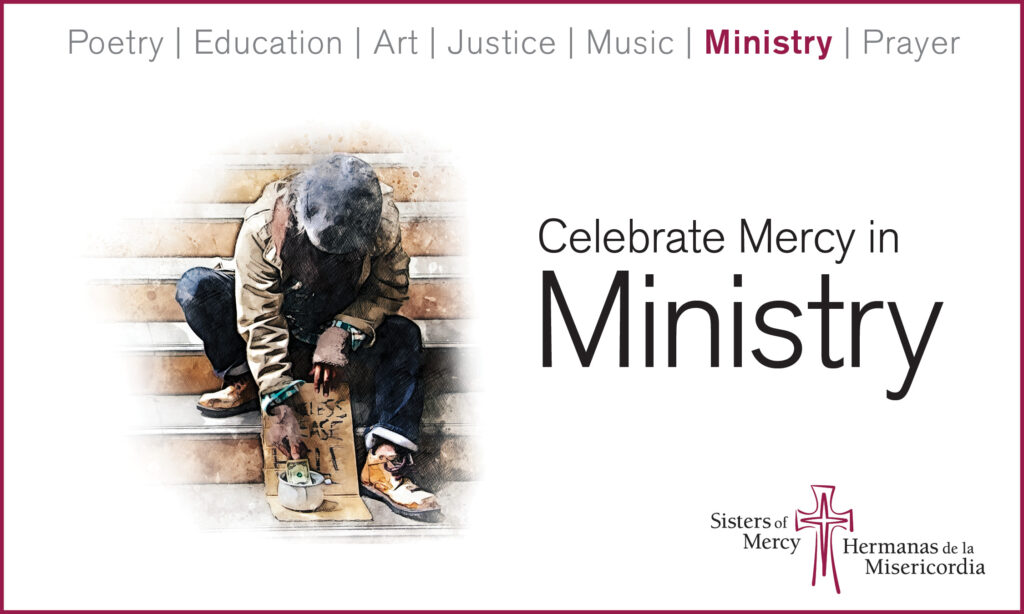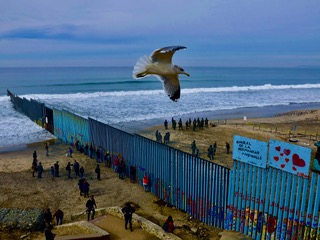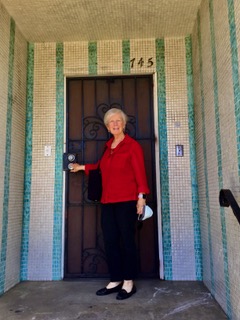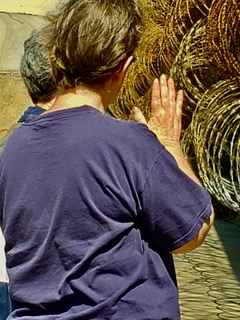On September 24, we will celebrate the 195th anniversary of the day Catherine McAuley opened the doors of the House of Mercy on Baggot Street. This began her ministry of serving the poor, the sick, and those in need of education. Beginning on September 17, we will “Celebrate Mercy” in history, poetry, education, art, justice, music, ministry, and prayer through reflections written by sisters.

By Sister Mary Waskowiak
We celebrate our call to ministry, and we say AMEN! So, what called each of us —sister, associates or companion—to Mercy? Who and what continues to call us, individually and as a community? To what does our fourth vow of service call us at this time in our individual and Institute lives? In our bones we know that Mercy responds to a need that’s known—and the need is constant, showing itself in the suffering of people and of Earth. The Institute’s Chapter Declaration of 2017 focused five Critical Concerns, naming immigration as one calling for response. Casa de Misericordia in San Diego, California, is a new initiative, weaving mercy and community around people in need on both sides of the U.S.- Mexico border in southern California.
Inspired by Mercy presence and action along the southern border in Texas, I experienced a call in 2020 to respond to the needs of migrants coming across the border at Tijuana, Mexico. Motivated by Catherine McAuley’s early houses of Mercy, a former convent at Our Lady of Guadalupe parish in San Diego has become Casa de Misericordia—a house of Mercy in an area known to be populated by 90 percent Hispanic persons, whose first language is Spanish.
The Casa community welcomes members of diverse backgrounds, ages, genders and faith traditions. Today Sister Mary Kay Dobrovolny and I share community with a young Franciscan sister and a lay woman. We form and live out common agreements around spirituality, community and service. And we are in discerning conversations with others who feel drawn to community and to service.
Five programs draw parishioners and neighbors (sheltered and unsheltered), as well as undocumented people who “feel safe to hide in public” because the majority of people look like them and speak their language. The programs include a community garden (where families who are learning to tend to the Earth plant, grow and harvest vegetables for themselves and others), an emotional-spiritual wellness circle called “Healing Hearts,” English as a Second Language (ESL) classes where women and men can enhance their English-speaking skills for work and daily interaction. The Community Resource Center, anchored by the services of a San Diego County social worker, offers free food, clothing, toys and conversation to anyone who comes. Thanks to the recent Mercy Ministry grant, we are able to engage appropriate personnel to assist those coming to us for proper documentation and other immigration needs.
Most of the Casa community members have fulltime ministries away from the center of activity, so we value periodic Sunday drives to the border wall. There we take quiet time to watch and listen to the sights and sounds on the Tijuana side of the border. We pray and, under the close watch of Border Patrol, approach the wall to touch those whose hands reach out to us. This quietly simple and powerful experience is one that reminds us why we are community. We also welcome anyone, mostly young adults, to a weekly hour-long lectio divina experience, called The Word with Mercy. We gather in the chapel, newly re-arranged to be a meditation room, for reading and reflecting on the coming Sunday Gospel. The growth of small community is a precious outflow of this weekly shared time.
This is one story of the call to Mercy ministry. It is evolving, and all are welcome to come, see and, maybe, stay. We celebrate Catherine’s call, a call to love and to serve in Mercy.


